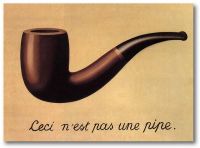Difference between revisions of "JCM312/The Avant-Garde (Discussion)"
From Screenpedia
Jump to navigationJump to search (added group 5) |
(Deleted group 5) |
||
| Line 4: | Line 4: | ||
#'''Group 3:''' How does Hughes characterize the surrealist use of sexuality? | #'''Group 3:''' How does Hughes characterize the surrealist use of sexuality? | ||
#'''Group 4:''' What previously dismissed forms of art (what Hughes calls, "kinds of expression") did surrealists advocate for? Why? | #'''Group 4:''' What previously dismissed forms of art (what Hughes calls, "kinds of expression") did surrealists advocate for? Why? | ||
| − | |||
#What elements of surrealism do you see in these films? | #What elements of surrealism do you see in these films? | ||
#*'''Group 1:''' ''Entr'Acte'' (Clair, 1924) | #*'''Group 1:''' ''Entr'Acte'' (Clair, 1924) | ||
| − | #*'''Groups 2 | + | #*'''Groups 2:''' ''Un Chien Andalou'' (Buñuel/Dalí, 1928) |
#*'''Groups 3 and 4:''' ''Zero for Conduct'' (Vigo, 1933) | #*'''Groups 3 and 4:''' ''Zero for Conduct'' (Vigo, 1933) | ||
| + | #'''All groups:''' Hughes maintains that "The [surrealist] object was collage in three dimensions" (p. 241). What do you think he means by this? (Meret Oppenheim's ''Luncheon in Fur'' is one example.) | ||
==Bibliography== | ==Bibliography== | ||
Revision as of 14:25, 19 September 2017
- Group 1: Why were surrealists obsessed with dreams and the insane? What does Robert Hughes mean when he characterizes "neurosis" as "the permanent involuntary form of dreams"?
- Group 2: René Magritte's The Treason of Images (1928-9) contains the phrase, "Ceci n'est pas une pipe" ("This is not a pipe"). What does Hughes feel is the significance of this phrase?
- Group 3: How does Hughes characterize the surrealist use of sexuality?
- Group 4: What previously dismissed forms of art (what Hughes calls, "kinds of expression") did surrealists advocate for? Why?
- What elements of surrealism do you see in these films?
- Group 1: Entr'Acte (Clair, 1924)
- Groups 2: Un Chien Andalou (Buñuel/Dalí, 1928)
- Groups 3 and 4: Zero for Conduct (Vigo, 1933)
- All groups: Hughes maintains that "The [surrealist] object was collage in three dimensions" (p. 241). What do you think he means by this? (Meret Oppenheim's Luncheon in Fur is one example.)
Bibliography
- Hughes, Robert. The Shock of the New. NY: Alfred A. Knopf, 1980.
